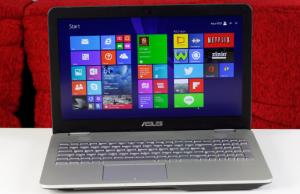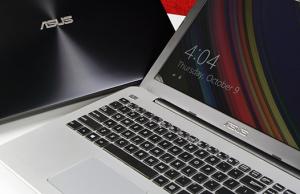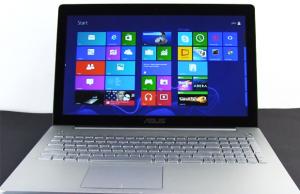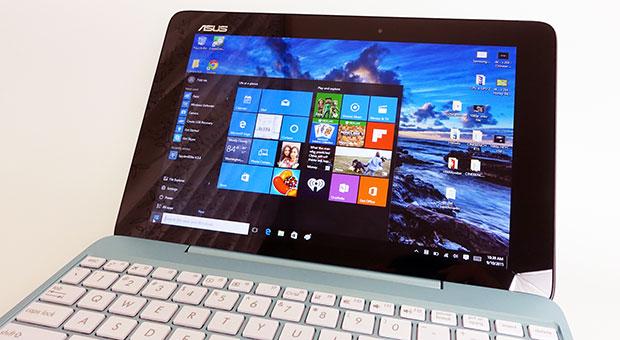It’s not a sleepy summer for 13.3 inch laptops, with many computers in the category being launched around this time. Two of them are the Lenovo Thinkpad X1 and the Asus U36SD, both having a fighting chance for your wallet if you intend to buy a laptop this summer. But which one is better, or, better said, is it possible to name a clear winner between the two? Stay tuned as we put these two 13.3 inch machines to the test in every possible aspect.
The specs
Looking at the specs, the Asus U36SD seems a little better equipped for living in the wild. It has a dedicated (and new) video card, better battery life, while the Lenovo is thinner and lighter. But we shouldn’t let appearances fool us too much, though, as we have to first see what’s the actual performance of the Asus and how well can the X1 handle itself with less firepower. Full spec list for both below.
Asus U36SD
- Display: 13.3 inch display, 1366 x 768 px, LED backlit, glossy finish
- Processor: Core i5-2410M processor clocked at 2.3 GHz, with HyperThreading and Turbo Boost (2.9 GHz)
- Video: hybrid graphics: Intel HD Graphics + Nvidia GT 520M + Optimus
- System memory: 6 GB of DDR3 memory
- Hard drive: 640 GB 5400 rpm HDD
- Networking: Bluetooth v2.1 + EDR, Wireless N, Gigabit Ethernet
- Ports: 2 x USB 2.0 , 1 x USB 3.0 , Card-reader, webcam, VGA and HDMI ports
- Battery: 6 Cell 4400 mAh 63 Wh battery
- Operating system: Windows 7 Home Premium 64bit OS
- Size: 12.9″ x 9.28″ x 0.76″
- Weight: 3.6 pounds with the 6 Cell battery (3.74 pounds with the 8 Cell battery)
Lenovo Thinkpad X1
- Processor: 2.5GHz Intel Core i5-2520M
- Memory: 4GB, 1,333MHz DDR3 RAM
- Hard drive: 320GB, 7,200rpm
- Chipset Intel: HM67
- Graphics Intel: HD 3000
- Networking:Ethernet, 802.11n Wi-Fi, Bluetooth, optional mobile broadband
- Ports: 1 USB 3.0, 1 USB 2.0, 1 USB 2.0/eSATA combo port, SD card slot
- Operating system: Windows 7 Professional (64-bit)
- Dimensions (WD): 13.3×9.1 inchesHeight0.65-0.85 inch
- Screen size (diagonal): 13.3 inches
- System weight / Weight with AC adapter: 3.8 pounds (4.6 with extra battery) / 4.7 pounds (5.5 with extra battery)
Build and design
The U36SD has a sleek design and is very thin, 0.76 inches. That’s almost as thin as the MacBook Air and Samsung Series 9 and within the 0.8 inch limit imposed by Intel for their Ultrabooks. The lid of the laptop is made from magnesium, which is a light, but durable material, also having a great matte finish, which will keep smudges and stains (mostly) away.
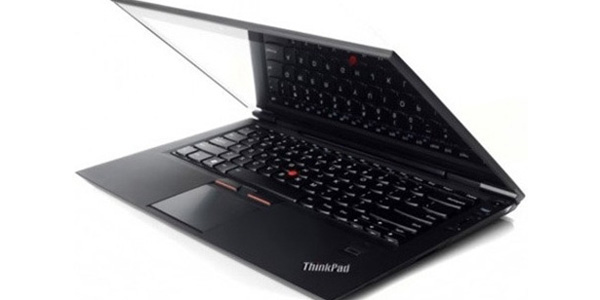
The X1 is the thinnest Thinkpad to date
The Thinkpad X1 is similarly thin, at 0.85 inches being the slimmest Thinkpad ever made! As for the design, it’s the same corporate chic look we’ve had on Thinkpads since…forever. It’s just much, much thinner. It has a black, matte finish with the Thinkpad logo on the chassis. It feels great to hold and is easily transportable with one hand, as the matte, soft finish is classy and great to touch. Anyway, if you’re a sucker for the Thinkpad look and feel, the X1 strikes gold.
Keyboard and touch pad
The keyboard on the U36SD is correct, so to say, but it’s nothing too impressive. It has quiet keys with little flex, but the plastic used is not great and typing experience is not out of the ordinary. The touch pad is made from the same material as the chassis and feels good to work with. Also, being a little “stiff” helps your finger not slip. Also, there are two proper sized mouse buttons with a fingerprint reader between them.
As for the X1, it has a great island type keyboard, with consistent, solid keys that are easy to press and don’t produce too much noise- not to say the keyboard is backlit, which is a great, but not too common treat on 13.3 inch machines. There’s also the iconic red dot tracker in the middle of the keyboard. Don’t quite know if many people actually use it, but it’s surely a distinctive feature of any Thinkpad out there. The touch pad is square, very precise and has a grid texture that won’t let your fingers wonder off from your on screen intents.
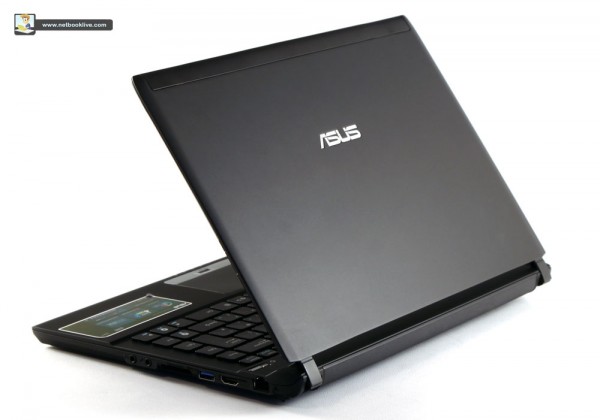
The Asus has a magnesium lid and a maximum thickness of 0.76 inches
Screen
The U36SD has a glossy, 13.3 inch, 1366 x 768 display, which is great when you look straight at it- brightness is good, colors are crisp. But as with all glossy displays, you’ll start to get a little angry when trying to view the screen from rather unconventional angles. Luckily, the screen tilts back quite a lot and you’ll be able to find a decent viewing angle even if you’re holding the machine on your lap. Also, you shouldn’t consider taking it outside- the screen and the sun don’t really hit it off.
The display on the X1 has the same maximum resolution and it comes with a Gorilla Glass coating. Unfortunately, unlike other Thinkpads, this one adds glare and viewing angles are kind of poor, as the display is not IPS. Colors are fine and all, but the lack of flexibility in viewing angles is a little concerning, considering the asking price of the unit.
Hardware and performance
Both machines have Core i5 processors, with the one on the X1 being slightly faster- but it’s not the type of difference you’ll feel in day to day activities.
The U36SD has the great advantage of a dedicated graphics card, the Nvidia GT 520M, which comes with 1 GB of dedicated memory. Add to that 6 GB of RAM and a 640 GB HDD and you have a very solid configuration, even for gaming. You can even go for a i7 processor if you like, but this configuration offers enough room to breathe- games like StarCraft 2 and HD playback will run smooth.
See our Asus U36SD review for more details on performances and test results.
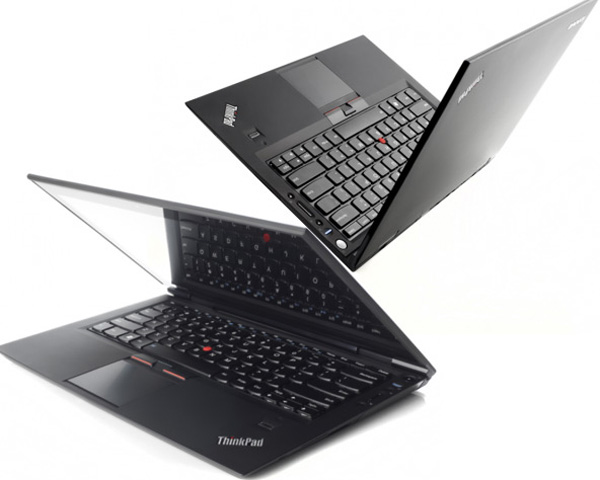
The X1 comes Intel integrated graphics, so gaming is kind of out of the question
The X1, on the other hand, is intended more for the business user. The platform comes with many hardware protection features, like encryption/decryption, and is solid enough to deal with multitasking, streaming and any business app you might throw at it. There’s a decent 7.200 rpm HDD in there and 4 GB of RAM, but still you won’t be able to use this laptop for gaming- it counts only on Intel HD 3000 integrated graphics, which will hardly play modern games; and even those on low details.
Connectivity
Both machines have WiFi, Bluetooth, a USB 3.0 port and a HDMI connector, but we have to give the X1 the prize for this one: there’s also a 3G module available, while the U36SD doesn’t have such a treat. But on the other hand, it’s not a business laptop.
Heat, noise, speakers
The X1 is both cool and quiet. Even after playing a full screen video for quite a while, the machine scored a maximum temperature of 92 degrees Fahrenheit (bottom) and an almost imperceptible 72 degrees on the keyboard. Sound wise, the X1 is quite impressive for such a small machine. The stock speakers are clear and with the volume turned just a little over half, you’ll be able to fill a room without a problem.
The U36SD is sadly, just the opposite in all aspects. It gets hot fast, reaching a maximum of 80 degrees Celsius after around half an hour of gaming and fans are quite noisy. It won’t get that hot during everyday use, but having a dedicated graphic card inside that slim body does meet its limits here. Unfortunately, speaker quality doesn’t help too much- the bulk Altec Lansing speakers have poor quality, although they come with SRS software.
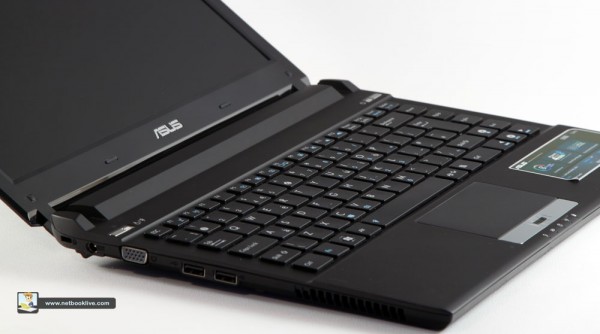
The U36SD has a standard chiclet keyboard and a glossy screen that can tilt back up to 170 degrees
Battery life
The X1’s battery is not very efficient and in normal use conditions, which kind of fit the routines of a professional, the laptop kneeled helplessly after a little under 4 hours. For 150 bucks more, however, you can get the extra slice battery, which doubles the autonomy, getting it 2 hours over the category average of 6 hours. In that average lurks the U36SD, which can go for almost 8 hours when you don’t throw too many apps at it and WiFi is off. But if you intend to play more and work less, don’t expect more than 4 to 5 hours of autonomy.
Prices and availability
There isn’t such a thing as a cheap Thinkpad and the X1 is no exception. The Core i5, 4 GB of RAM, 320 GB HDD version comes for $1399, while the extra battery, SSD instead of HDD and more RAM pumps the price to almost $1800.
The U36SD, on the other hand, is currently available only for pre order for $999. It’s much cheaper and in some aspects offers a better experience.
The X1 is available worldwide, but the US market has to settle for the Core i5 version only, while the rest of the world can opt for i3 or i7. Asus doesn’t, from what we know, have similar configuration restrictions when it comes to territories.
Final thoughts
So, what have we learned? As always, Thinkpads are great laptops, with fantastic keyboard and design, and the X1’s hardware configuration makes it a choice for any professional in need of a machine that can deal with pie charts and documents at warp speed. Sure, it’s highly expensive, starting at $1400, but Lenovo fans know there’s a price to pay for this exquisite line of laptops.
The U36SD on the other hand, is significantly cheaper and packs better hardware, but lacks the finesse the X1 has; still, if corporate style and features are not your cup of tea, the cheaper, multimedia equipped U36SD will work like a charm.
Further updates on modern business laptops are available in these articles about sub-11-inch and 12-inch ultraportables, as well as in this guide that will help you pick the best business thin-and-light notebook out of the multitude available in stores.

